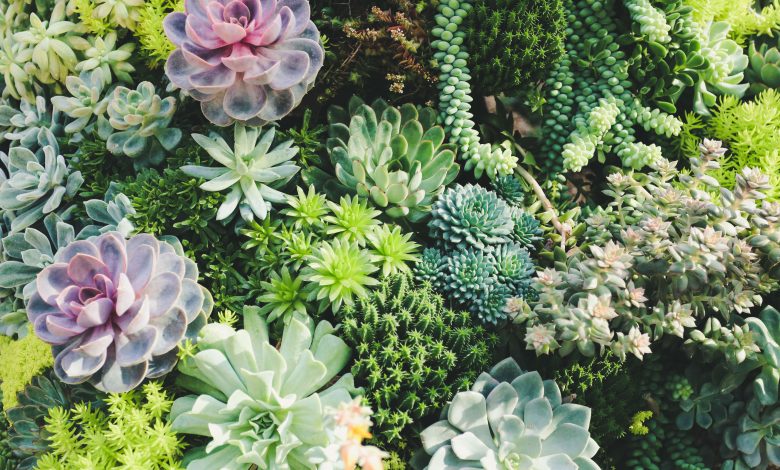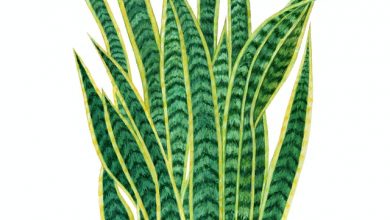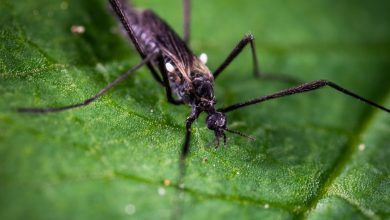How to Properly Care for Indoor Succulents

Succulents have become a very popular indoor plant in the last decade. Their bright colors, fun shapes and seemingly effortless care regime have made them a staple in people’s green spaces.
That being said, there is a lot to know about caring for succulents before you can enjoy their full potential inside your home. As much as we’d love to say they are as easy to care for as people say, it’s not quite the truth. That is – until you really know what you’re doing!
Whether you’ve purchased your first succulent or you’re attempting your tenth, there is much to know about succulent care that will make your experience even better. These tips are even helpful for those who have struggling succulents – take this information into consideration, and you may be able to bring your plants back to their former glory.
If you want to know how to properly care for indoor succulents, consider the following tips and tricks to help your plants do their very best.

The Basics of Succulents
Succulents are unique plants that are characterized by having thick, fleshy parts that are designed to retain a great deal of water. There are estimated to be sixty different plant families that include variations of succulents within them. Their original habitats are dry areas with high temperatures, most commonly seen in deserts.
The fleshy parts of these plants are designed to hold a great deal of water, which is necessary in the warmer climates that are prone to drought. Whenever rain is sparse, the succulents will reach into their water supply and feed themselves until wet season arrives. Because of this process, succulents are referred to as drought-resistant plants.
Plants that can live in dry environments are coined as “xerophytes.” Keep in mind, though, that not all xerophyte plants are succulents. That is because some plants also use other practices to survive during drought – for example, rolling up their leaves to lower exposure to the sun.
The Habitat of a Succulent
While it’s true that a lot of succulents can be found in desert-like environments, most of these plants cannot tolerate the hottest places on the planet.
For example, Australia is one of the driest continents; however, succulents are few and far between here. Similarly, Africa is another of the hottest continents, and yet, most succulents cannot live through its dry season.
While succulents struggle in high-heat locations, they can still flourish in places where most other plants would have zero ability to grow. The hardiest of succulents may be able to survive without water for a couple of years without fully drying out. In some unique situations, succulents will grow off of other plants and have very little contact, if any, with the actual soil.

Common Mistakes Made with Succulents
There are a handful of things that succulents are very picky about. Naturally, water is one of them. Depending on the type of pot that you plant your succulent in, you will either be setting up your plant for success, or serious failure.
Here are some common mistakes that people make, which often lead to growth troubles with their succulents:
Pots Without Drainage
We know that there are a lot of cool pots available for planting. They come in a variety of unique shapes and colors, with many speaking to our personal style and indoor décor. While it’s nice to be able to plant your succulent in a pot that you love, you could be doing your plant a disservice if the pot doesn’t have a drainage hole.
Many pots are formed without a drainage hole at their base. This might be okay for some types of plants, but it’s safe to say almost all plants will do better in a pot that encourages proper drainage.
It’s true that succulents like to enjoy a full soaking, but they don’t like their roots to sit in the water. Instead, proper drainage is crucial if they are to avoid root rot, fungus, and even bugs.
To avoid any issues, start your succulent out from the very beginning with a pot that has drainage. Since it will be indoors, you’ll want to make sure you have something collecting the water from below.

Soil with Poor Drainage
Even if you only have access to pots without drainage holes, you can increase your plant’s chances of success by using the right potting soil.
Surprisingly, a lot of people don’t know that it’s a big mistake to buy just any type of soil for plants, especially tropical and desert-climate plants. The makeup of various soils is meant to suit the needs of different types of plants!
One of the biggest mistakes people make when purchasing succulents is to plant them in any run-of-the-mill soil. In these instances, it is almost guaranteed that the plant will begin to wilt after a few months.
For succulents, a regular potting soil just won’t do. In order to wet the roots of the succulents properly without letting the water sit having soil with lots of space between particles for air and water to move in necessary.
If you have the right type of soil, the water will be able to move past the roots and wet them and then safely remove most of its contents to the outside of the pot. Essentially, the soil of a succulent needs to be comprised of bigger, less compact nutrients that let air and water move easily.
Here is a basic combination of nutrients that you can combine to create a beneficial soil:
- Pine Bark Fines
- Granite (crushed)
- Turface (or any absorptive rock)
It might look strange (people usually imagine dark, compact ingredients when they hear soil), but this is not what your succulents require. This is especially true for indoor succulents, which aren’t getting the same kind of air and water flow that they would get outside.
If you don’t have access to these particles, check your local nursery. You should be looking for particles that are about a fourth of an inch. Alternatively, your local nursery might have their own succulent-specific or cactus soil, which is created with desert-type plants in mind.
Overwatering
Succulents can be very dramatic when they’re upset about their environment. You might have a perfectly healthy succulent one day, then come home after work to a pale, droopy plant.
What did you do that day that could have upset the plant so much? The answer is in the watering.
Overwatering is one of the most common mistakes when it comes to succulents. Naturally, if you are used to having indoor plants that are native to wetter climates, then you’ll be trained to water anything that droops. In most cases, this works! Unfortunately, succulents do the complete opposite.
It’s important to remember that succulents have their fleshy leaves and stems, because they’re already storing water. They hardly get any of their water intake from the actual watering you do; they prefer to get their water from the atmosphere around them.
That being said, if you’ve got a succulent that’s unhappy, you’ll want to skip the watering can and instead look at light sufficiency and drainage. You’ll also want use your finger to see how wet the soil is – chances are, it’s way too wet for the plant to be comfortable.

Misting
Misting has become a strange phenomenon with plants over the past couple of years. Maybe a mister looks cool with your plant décor, but there is a good chance it’s not actually doing anything productive for your little green guys.
Succulents, in particular, do not need to be misted. Misting will not give them the soaking they need, nor does it get into the roots where it really counts. Misting may be able to help plants that seek humidity a tiny bit, but there are better ways to take care of humidity-heavy plants.
If you’re only watering your plants with a mister, they will have to work so much harder to get the soaking that they need. A sign of this is when your succulent starts to grow tiny, frail roots, in hopes of increasing their moisture intake. It’ll work for a little while, but the plant will eventually die off entirely.
Drafty Locations
Succulents first sprouted in the dessert, which says a lot! These plants like warm, dry places, and they’ll struggle if you keep them too close to drafty windows or cold air flow.
With this in mind, avoid putting these plants on windowsills during the winter, even if they’re not getting as much sun. They’re most likely in more of a dormant stage anyways, so move them back when the weather is warmer.
Overpopulating a Pot
Succulents that are healthy will grow outwards more quickly than they will grow upwards. Additionally, their roots will grow thick and long. With this in mind, it’s important to know that you should not plant succulents too close together.
A lot of nurseries offer beautiful displays of succulents with four, five, or eve six succulents in one pot. While it looks nice for the first little while, succulent pros know that this isn’t something that can be maintained.
Not only do succulents needs deep pots, they also need lots of space to grow outwards. Having other plants in the way prohibits their growth, and larger succulents will block the sunshine from reaching smaller ones.
It’s best to give succulents their own pot to grow in, and make sure to transfer them to larger pots when the time comes. Overcrowding is pretty at first, but can be disastrous.
Glass Containers
Succulents often come in glass containers, bottles, and terrariums. Yes, they do look very attractive in the beginning, but succulents often struggle with a pot that is so compact. Glass containers lack the breathability that succulents need, as well as drainage holes.

How to Properly Grow Succulents
Before you purchase any succulents for your home, do some research on the different types available. Some varieties are known to have thicker leaves, while others are thinner and hold less water.
You’d be amazed at the differences in the varieties, and this information will make it easier for you to choose what type you care for and what it will require from you to survive.
Sunshine is Key
Desert plants love the sun, so in order to grow succulents properly, they will need lots of it. The need is less in the winter; however, if you have very little sun in your home, succulents may not be a good idea.
Many people are under the impression that their tall, floppy succulents are doing well. Unfortunately, this usually isn’t the case. A succulent that has grown very tall but with few leaves along its stem is doing something that is referred to as “stretching”.
Essentially, the plant isn’t getting adequate sunlight from its position, and it’s needing to stretch as much as possible to reach the light that it does feel.
When they’re getting enough sunlight, succulents should be thick and full, with lots of leaves. A stretched-out plant is struggling to get enough sun, so you’ll need to move it to a better location.

Watering Succulents
While there are lots of mistakes that can be made when it comes to watering your succulents, there are a few key things to remember to do it the right way.
Water the Roots
Focus on getting the roots of your succulents wet; not the rest of the plant. It will work to soak up moisture on its own, so you need to focus on its roots.
Water Once a Week
As a basic rule, you can water your succulents once every week. If you’ve got proper soil and drainage, then this shouldn’t be a problem for your succulents. To be more specific, water your plants when the soil is completely dry. Record how often this happens to your plant, and you’ll have a better idea of how often to water.
Consider Your Environment
If you find your home is quite dry, you might need to water more often than someone in a very humid location. Alternatively, you can incorporate a humidifier if you don’t feel comfortable watering your succulents often.

Water Less in the Winter
Some succulents can go the entire winter season without needing a watering. Like most plants, they go into a dormant state during the winter, so you’ll see less growth and water needs. Pay attention to how your succulents respond as winter gets closer; if they’re still soaking up the water and growing, maintain the schedule until you notice any changes. (More water in the drainage base, succulent drooping, etc.)
Less is More
If your succulent seems to be struggling, it’s best to go with less water than more. Succulents can die very quickly if they’re overwatered, and they may need time to dry out.
As a basic rule, the amount of water you use should equal about half the amount that the pot holds. So if your pot holds two cups of soil, you’ll add one cup of water. If the pot you’re using isn’t see-through, use a measuring device so you know how much water to add.
Using a watering can or cup leaves your plant exposed to overwatering. A plant without drainage holes will likely need to be watered less often than one that does.
Pay Attention to the Leaves
One thing people seem to worry about is that the leaves at the base of their succulent become dry and brown. Like many other plants, these are the leaves that go first.
This is nothing to worry about; however, if it is the leaves at the top of your plant that are struggling, then this is a sign that you need to re-assess your plant care.

Gentle Succulent Care
If you’re thinking about adding some succulents to your plant collection, keep these five main points in mind:
- As much sunlight as possible
- Water when the soil is dry
- Drainage is key
- Do not overpopulate
- Use quality succulent soil
As difficult as some succulents seem to be, their most common cause of death is usually overwatering. People are generally used to watering a plant that looks like it’s struggling, and this is exactly the opposite of what you want to be doing with a succulent.
Always head to the soil of a succulent first to figure out what the problem may be. Then you can go forward with a better solution.

Succulents are bright, vibrant plants that are ready to impress you with their unique shapes! A succulent that is happy will likely do all kinds of fun things in its habitat, and you’ll know when it’s flourishing.
Don’t be overwhelmed by these tricky plants; once you have the hang of it, caring for succulents can be easy! Keep a record of the things your plant likes and when it likes them. We guarantee you’ll be rewarded for your efforts with a desert-loving plant right in your own home.



